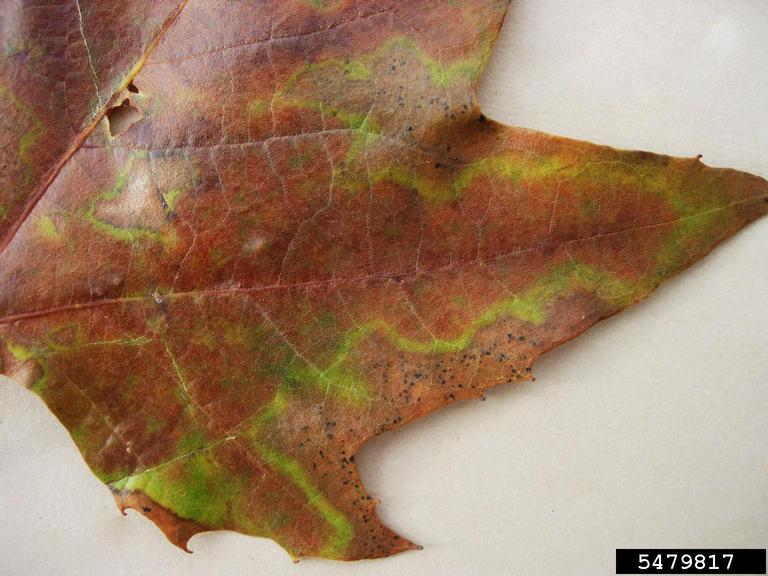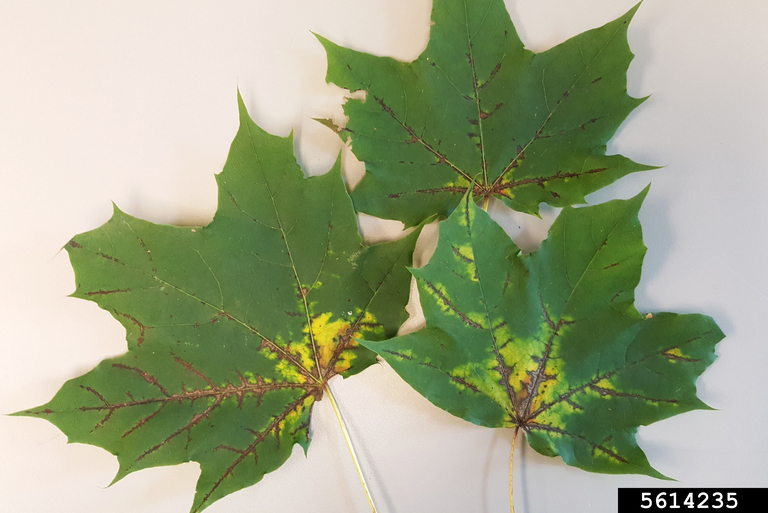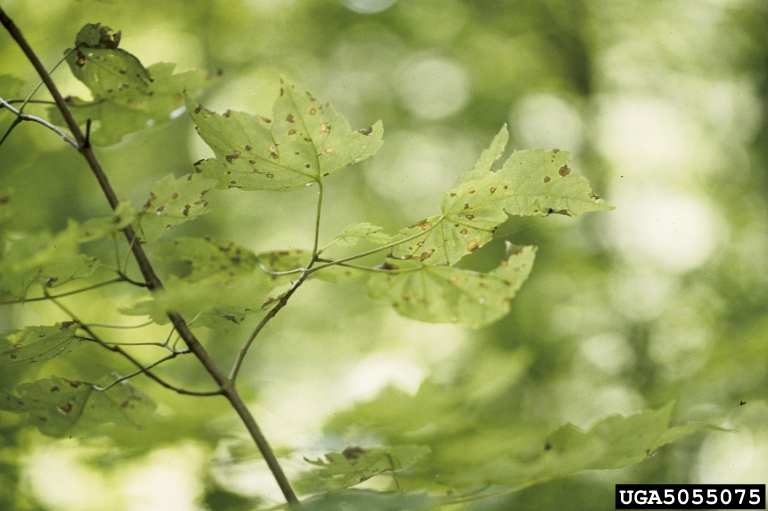If you’re a proud owner of a maple tree, you probably know that it can be a wonderful addition to any home’s landscape. These trees provide valuable shade to your home and offer showstopping colors in the fall. However, like any other living organism, maple trees can get sick too. As a homeowner, taking care of your trees can be daunting, but with a few preventative measures and some basic knowledge of common maple tree diseases, your trees can thrive.
Leaf Scorch
Most of the time, leaf scorch is a symptom that occurs when the leaves of your maple tree are exposed to too much sunshine and dry weather. Prevention of leaf scorch starts with proper watering during drought periods. Mulching can help retain moisture in the soil, and trees should be pruned properly to allow for better air circulation. Avoid topping your tree, as this can lead to sunburn.

Photo credit: Elizabeth Bush, Virginia Polytechnic Institute and State University, Bugwood.org

Photo credit: Nancy Gregory, University of Delaware, Bugwood.org
Bacterial Leaf Scorch (BLS) is a different beast entirely. This disease is caused by a bacterium that infects the xylem (water conducting tissue) of the tree, causing leaves to become scorched and die. High humidity and high temperatures create the perfect climate for bacterial leaf scorch, so it is crucial to maintain proper watering, fertilizer, and pruning techniques.
Anthracnose
This common fungal disease usually affects the leaves of maple trees. It can cause brown spots on the foliage, and in severe cases, dieback. Anthracnose thrives in wet, humid conditions, so keep your trees well-ventilated and avoid overhead watering. In severe cases, we can apply treatment to combat anthracnose, but these treatments are most effective when applied preventatively, as any existing discoloration or damage won’t be reversed by the treatment.
Leaf Spot

Photo Credit: Joseph OBrien, USDA Forest Service, Bugwood.org
The most common leaf spot disease that affects maple trees is Phyllosticta Leaf Spot, known colloquially as “Purple Eye.” This disease causes dark spots on the leaves and typically occurs when leaves are continuously wet. In addition to causing serious aesthetic issues, this fungal disease can get severe if left untreated, leading to leaf drop. To prevent this fungal issue from damaging your maples, look for fallen leaves with black fungal growths on the leaves. Preventive treatment is possible, if the issue is detected e
Maple trees are beautiful when they are healthy, but diseases can take away from their stunning aesthetic appeal. Proper care, pruning, and disease prevention can help maintain the beauty and health of your maple trees. Be vigilant with your watering and pruning schedules, and don’t forget to monitor for common maple tree diseases (or have us monitor for you). With timely action, you can ensure a healthy tree that will grace your yard for many years to come.


